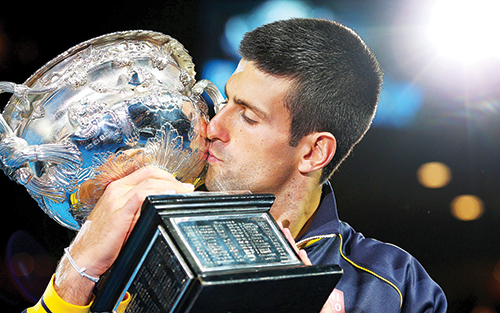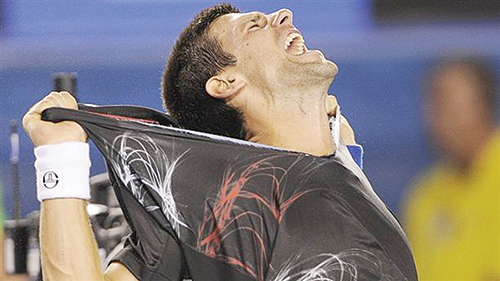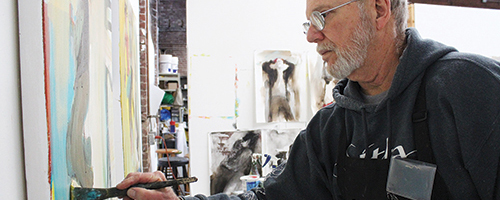After two weeks of unusually crisp weather in the heart of the Australian summer, the first major of 2013 came down to the two most likely candidates in the draw. Novak Djokovic, the top seed and two-time defending champion in Melbourne, had come through his half as expected, with a five-set thriller against Stanislas Wawrinka in the fourth round marking the only real trouble on his way to the final.
Basement Notes: Novak Djokovic

After two weeks of unusually crisp weather in the heart of the Australian summer, the first major of 2013 came down to the two most likely candidates in the draw. Novak Djokovic, the top seed and two-time defending champion in Melbourne, had come through his half as expected, with a five-set thriller against Stanislas Wawrinka in the fourth round marking the only real trouble on his way to the final. Djokovic was greeted there by third-seeded Andy Murray, who had torn through his own section up until the semifinals where he outlasted Roger Federer in five grueling, often contentious sets. It was the 18th meeting between the two, a rivalry that has come to represent the stylistic endpoint of this current phase of the sport’s evolution.
Professional tennis is more physically punishing than ever; advancements in string and racket technology allow players to take huge cuts and still keep the ball in play, while tournament directors continue to slow down court surfaces in order to foster the type of marathon that has become commonplace at the tour level. Rallies that used to last 10 shots now go on past 20, and those who hit winners for a living are gradually becoming an anomaly in the rank-and-file. The philosophy now adopted by the world’s best players is simply to try their best not to miss. Ever.
Djokovic and Murray are perhaps the most refined examples of this fundamental shift in paradigm. Both have the ability to end a point at any moment but neither relies on it, often choosing instead to hit their spots with just enough pace to make sure that their opponent can’t offer an effective reply. Far from being passive, their approach is a purely methodical deconstruction, playing the percentages, laboring to give themselves a chance in every point. Djokovic has the more aggressive game overall while Murray’s defense and anticipation are at the core of his attack, but the principle is the same—they hit the ball cleanly, they hit it deep and they don’t stop until somebody reaches the finish line.
The two finalists had staged a pair of five-set epics at the majors in 2012—a win by Djokovic in the semifinals of the Australian Open and Murray’s Grand Slam breakthrough at the U.S. Open—and for the first couple of hours, it appeared that another was on the menu in Melbourne. Djokovic opened the match clearly on edge, struggling with his range throughout the first set, but managed to take care of his serve and work his way into a tiebreaker that Murray won easily, 7-2. Both players held serve in the second to reach another tiebreaker, and were tied at 2-2 when Murray double-faulted to give up the advantage. Djokovic won four of the next five points and ran away with the set.
The third set continued on serve until Djokovic finally got the first break of the match at 4-3, after about two and a half hours on court. Djokovic was gaining confidence with every point, moving more fluidly and hitting out on his shots, and Murray, two days removed from his four-hour semifinal against Federer, began to feel the effects of that match as his feet blistered and his hamstrings tightened up. Djokovic calmly served out the set and then took flight in the fourth, aiming for the corners and dragging his exhausted opponent all over the court. Murray did what he could to hold his ground but had nothing left, and Djokovic closed out the match 6-2.
It was yet another clinical performance from the six-time major champion and world number one, relentless and brutally efficient and graceful in its own way. With the victory, Djokovic collected his fourth Aussie Open title overall and became the first male player in the Open era to win three straight titles in Melbourne, solidifying his place at the top of the rankings and serving notice to the rest of the tour that although the attention this season will continue to be divided among the top four, he has no intention of sharing the wealth.





